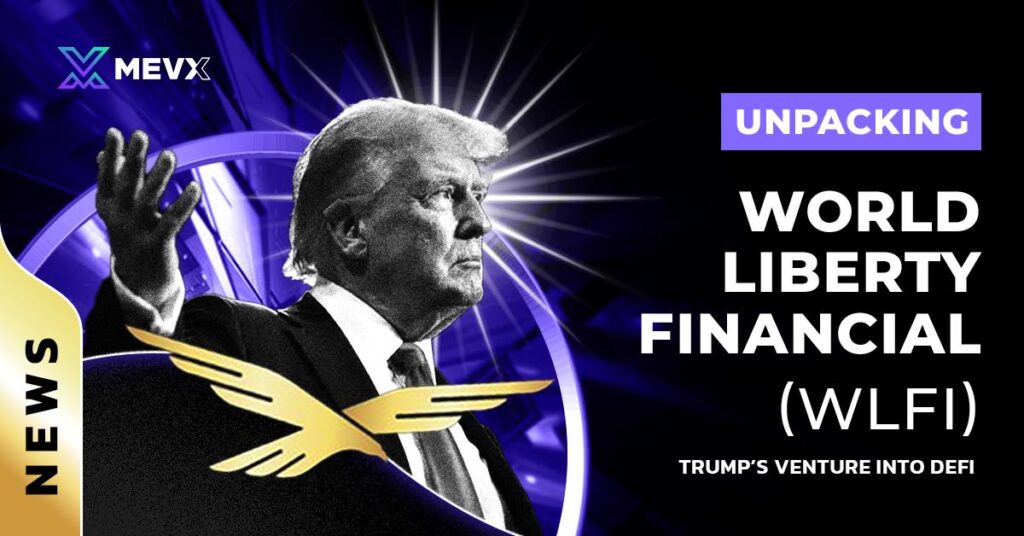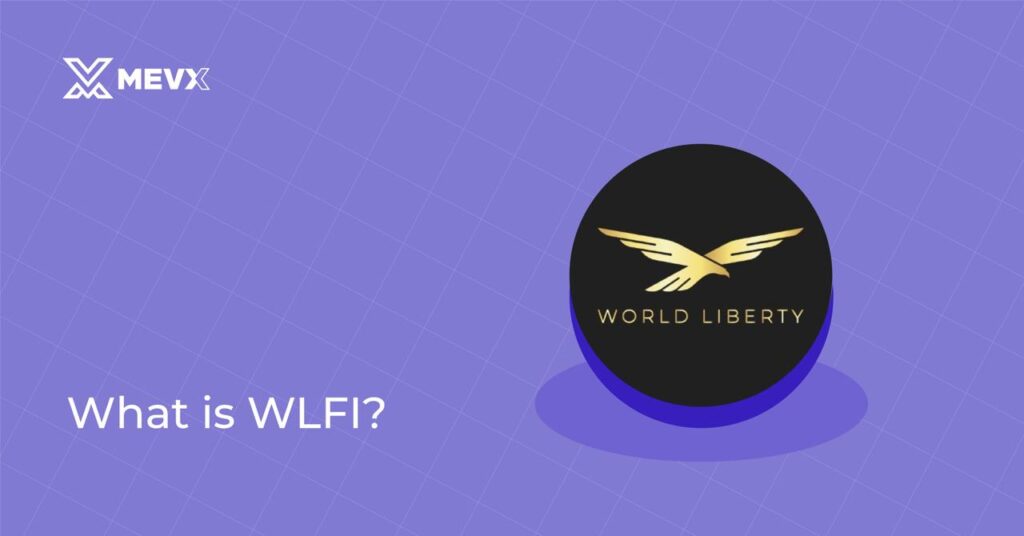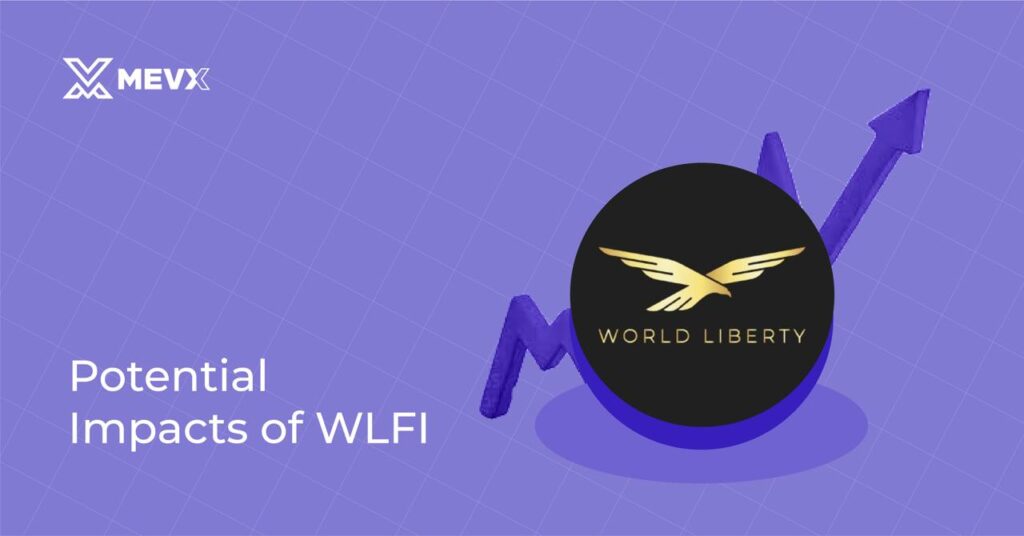The decentralized finance (DeFi) sector has witnessed numerous innovations, but few projects have made as much noise as World Liberty Financial (WLFI). Launched in 2024 with endorsements from Donald Trump and his family, WLFI is a bold experiment at the intersection of politics, technology, and finance. With promises of empowering individuals through decentralized crypto banking, the project has sparked curiosity, excitement, and skepticism in equal measure. Let’s explore what sets WLFI apart and how it aims to reshape the DeFi landscape.

Background and Genesis
World Liberty Financial was introduced to the world amid Donald Trump’s political campaign in late 2024. The project aims to “Make Crypto and America Great Again” by bolstering the adoption of decentralized finance and promoting the U.S. dollar as a key player in global financial systems. Trump himself has taken on the role of “chief crypto advocate,” while his sons, Eric and Donald Trump Jr., serve as “Web3 ambassadors.” The youngest Trump, Barron, has been credited as the “DeFi visionary.”
Although the Trump family lends its high-profile branding to WLFI, their involvement is largely symbolic. The actual leadership and operations are managed by a team of DeFi enthusiasts, including co-founder Zach Witkoff, son of real estate developer Steve Witkoff.
The timing of the project coincides with increasing political discourse around cryptocurrencies and their role in modern finance, making WLFI’s launch particularly significant.
What is World Liberty Financial WLFI?
At its core, WLFI is a decentralized finance protocol designed to offer services such as borrowing, lending, and liquidity pooling without traditional financial intermediaries. By leveraging blockchain technology, WLFI aims to democratize access to financial tools and strengthen the role of the U.S. dollar in the global economy.

The centerpiece of the project is the WLFI token, a governance token that grants holders the right to vote on platform-related decisions. However, the token is non-transferable, meaning it cannot be traded on secondary markets. This unique approach prioritizes community governance over speculation, aligning with WLFI’s vision of creating a functional and purpose-driven DeFi ecosystem.
WLFI plans to launch its services on the Ethereum blockchain, utilizing established infrastructures such as Aave’s v3 protocol for borrowing and lending. This technological foundation lends credibility to the project while positioning it within the broader Ethereum ecosystem.
Tokenomics and Distribution
The WLFI tokenomics have been a topic of significant debate and scrutiny. The project initially aimed to raise $300 million at a $1.5 billion valuation, with 30% of the total token supply allocated for public sale. However, the token sale faced a rocky start, with only a fraction of the goal achieved on its first day.
A large portion of the tokens, 70%, has been reserved for the founding team, advisers, and entities linked to Donald Trump. Critics have pointed out that this high insider allocation raises concerns about centralization and conflicts of interest. Moreover, the non-transferable nature of the token limits its liquidity and speculative appeal, which is unusual in the volatile world of meme coins and DeFi tokens.
The revenue model also includes allocating 75% of the generated funds to entities controlled by Donald Trump, further fueling debates about the project’s intentions and long-term viability.
Market Reception and Performance
The market reception to WLFI has been a mixed bag. On one hand, the project’s association with Donald Trump has garnered significant media attention and high-profile endorsements. Figures like Justin Sun, founder of Tron, have publicly backed the project, adding credibility to its ambitions.
On the other hand, the token sale’s underwhelming performance and the project’s unconventional tokenomics have led to widespread skepticism. Many critics have drawn parallels to Trump’s previous ventures, such as Trump University, questioning whether WLFI is a genuine attempt to innovate in the DeFi space or merely a branding exercise.
The lack of transferability for WLFI tokens has also been a sticking point, as it diverges from the norms of speculative trading that often drive interest in crypto projects.
Security, Compliance, and Challenges
WLFI has emphasized its commitment to security and compliance, leveraging Aave’s v3 protocol to ensure a robust technological foundation. Additionally, the project has partnered with established blockchain service providers like Chainlink to integrate secure price feeds and cross-chain functionalities.
However, the project’s token sale faced technical glitches, including website crashes, which hampered its initial launch. These issues, coupled with the project’s regulatory restrictions—limiting the token sale to accredited U.S. investors and non-U.S. residents—have created hurdles for widespread adoption.
Critics have also raised concerns about the legal classification of WLFI tokens. While the project insists that the tokens represent governance rights rather than securities, the non-transferable nature of the tokens has led to debates about their compliance with U.S. securities laws.
World Liberty Financial’s Vision: Shaping the Future of DeFi and Global Finance
World Liberty Financial’s ambitions go beyond just being another DeFi protocol. By promoting U.S. dollar-backed stablecoins and emphasizing decentralized governance, WLFI aims to influence both the DeFi sector and global financial systems.

- Impact on DeFi: WLFI’s governance-first model challenges the speculative nature of many DeFi projects. If successful, it could pave the way for a new approach to community-driven finance. However, its high insider allocation and centralization risks could also make it a cautionary tale.
- Impact on the U.S. Dollar: WLFI’s focus on dollar-backed stablecoins aligns with efforts to strengthen the U.S. dollar’s role in the digital economy. This could have geopolitical implications, particularly as other nations explore alternatives like central bank digital currencies (CBDCs).
- Political Implications: WLFI fits into Donald Trump’s broader narrative of deregulation and innovation. Its success or failure could influence his political legacy and shape perceptions of his engagement with modern technology and finance.
Future Outlook of World Liberty Financial
Despite its challenges, WLFI has ambitious expansion plans. The project aims to integrate with other DeFi platforms and deploy lending and borrowing services on the Ethereum mainnet. These developments could enhance its utility and appeal to a broader audience.
The road ahead for WLFI is uncertain. Its success will depend on overcoming initial skepticism, addressing technical and regulatory hurdles, and delivering on its promises of financial empowerment. If it manages to navigate these challenges, WLFI could carve out a unique position in the DeFi space. Otherwise, it risks fading into obscurity as yet another overhyped project.
World Liberty Financial is an intriguing experiment that blends political branding with decentralized finance. Its focus on governance, coupled with its association with the Trump family, makes it one of the most high-profile DeFi projects to date. However, its unconventional tokenomics, regulatory challenges, and initial market struggles highlight the complexities of launching a successful crypto project.
As the DeFi sector continues to evolve, WLFI serves as both a case study and a litmus test for how traditional power structures can intersect with decentralized technologies. Whether it will be remembered as a groundbreaking innovation or a cautionary tale remains to be seen. For now, WLFI’s journey is a story worth following in the ever-changing world of cryptocurrency.
Stay ahead with MevX Blog for updated news in the cryptocurrency world!
Share on Social Media:
